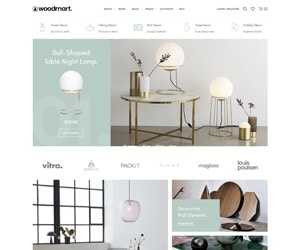If you find yourself wondering what the best metal for rings or other jewelry is, you’re not alone. And the answer may surprise you as it largely depends on your lifestyle and preferences. Each jewelry metal has its own set of distinctive characteristics, from how it looks to how it wears over time. While gold, silver and platinum are the most well-known metals associated with jewelry, several other types of jewelry metals are available that may better fit your needs. Keep reading for a list of the most popular metals used in jewelry making today.
Ceramic
Ceramic jewelry is made from ion casino jewelry-grade zirconium ceramic, also known as titanium carbide. While ceramic is comparable to tungsten in terms of durability, it is much lighter in weight, adding to its wearable appeal. The overall look of ceramic is sleek and shiny, and because it’s incredibly hard, it’s virtually scratch-proof in any color. Due to its high melting point, ceramic jewelry won’t bend out of shape with extensive wear. It is important to note that ceramic rings generally run true to size and cannot be resized.
Care: Routine cleaning of ceramic jewelry will help maintain its unique appearance. Ceramic jewelry should be cleaned using a soft cloth with a mild solution of detergent-free soap and warm water. Harsh jewelry cleaners can break down the surface luster of ceramic jewelry and should be avoided.
Gold
Gold is one of the most recognizable precious metals. While gold is durable and resistant to tarnish and corrosion, it is very malleable when heated, allowing it to be shaped into many different jewelry forms.
A variety of different types of gold Open in new window exist, from colors to purities. The purity of gold is measured in karats, with 14K and 18K being the most common in jewelry. Sterling silver jewelry can also be electroplated with karat gold. If the plating is at least 100 millionths of an inch thick, it is called “vermeil” and is an affordable alternative to karat gold jewelry.
Care: Gold jewelry should be routinely cleaned with a detergent-free soap and warm water, using a soft-bristled brush. We recommend professional cleaning three to four times a year to check settings and clasps. Prevent abrasions and dulling by keeping your gold jewelry away from chlorine, cleaning fluid and other household cleaners. Store your gold pieces in soft cloth bags or in their original boxes.
Meteorite
Due to its fashionable and unique nature, people have used meteorite in jewelry making for thousands of years. The most common way to incorporate meteorite in jewelry is by taking cross-sectional slices of the meteorite. The unique patterns revealed are called Widmanstatten patterns, formed by the long nickel-iron crystals inside the meteorite. Meteorite jewelry may have natural inclusions called troilite, making every piece unique.
Care: Meteorite will not chip or break but can be scratched, so it’s not recommended to wear your meteorite during intense activities. Because meteorite is an iron-based metal, it has the potential to rust. It is important to keep meteorite jewelry away from chemicals like chlorine, bleach, and acid.
Meteorite Rock Types
Below is a list of the types of meteorite found around the world.
- Gibeon – Gibeon is a meteorite that was discovered in 1838 in Namibia. Gibeon is composed of an iron-nickel alloy with large
amounts of cobalt and phosphorus. - Seymchan – Discovered in 1967, this meteorite is named after the Russian village it landed near. Compared to other meteorites,
Seymchan is considered relatively rust-resistant and stable. - Campo Del Cielo – Spanish for “Field of Heaven” this iron meteorite type was found near Buenos Aires, Argentina. The heaviest of
the meteorite group, it was discovered in 1576. - Sikhote-Alin – Bursting through the atmosphere in 1947, this meteorite’s “debut” was witnessed by many near the Russian city of Vladivostok.
- Muonionalusta – The oldest meteorite discovered by man, Muonionalusta was found in Scandinavia and contains an extremely rare mineral, Stishovite.
- Moldavite – This material is actually glass formed by a meteorite impact. With a slight green tint, it forms in beautiful “flower bursts” naturally.
- El Hammami – Discovered in 1997 in Mauritania, Africa, El Hammami contains sheets of iron, giving it a unique texture and shine.
Palladium
Palladium is a silver-white metal that will not tarnish and remain white. A member of the platinum metal group, it is stronger and more lightweight than platinum. Palladium is 95% pure, with the ruthenium alloy being added to enhance hardness and consistency. It is also hypoallergenic.
Many designers enjoy working with palladium as it is more malleable and can be used in delicate, intricate designs. Palladium jewelry can be set with gemstones and is more affordable than platinum or white gold jewelry, making it even more attractive for purchase.
Care: Like most precious metals, routine cleaning will help to maintain its unique appearance. Palladium jewelry should be soaked in a mild solution of soap and warm water. Gentle scrubbing with a soft-bristled brush is also recommended. Palladium can take on a patina finish over time, but routine cleaning can prevent this.
Platinum
Considered one of the purest precious metals, platinum is extremely rare and primarily mined in Russia or South Africa. It has a silvery-white luster and is four times stronger than gold, making it a durable metal ideal for daily wear. Due to its strength, platinum is mixed with other metals to make it more malleable. Most platinum used in jewelry is 90% pure platinum, with 10% being iridium, palladium or ruthenium.
Platinum is hypoallergenic, a perfect option for those with skin sensitivities. Over time, platinum can develop a “patina.” While some wearers enjoy this look, it can be refinished to its original luster if preferred.
Care: In order to clean, platinum jewelry should be soaked in a mild solution of soap and warm water. Gentle scrubbing with a soft-bristled brush is also recommended. To maintain its luster, buff your platinum jewelry with a soft cloth. You can also renew its shine by getting your platinum jewelry professionally refinished.
Sterling Silver
Versatile and affordable, sterling silver is the most popular silver alloy on the market. While beautiful, pure silver is soft and very malleable, making it not ideal for the jewelry you’d wear every day. Sterling silver offers the lasting durability necessary for routine wear without compromising its aesthetic qualities and is created by combining 92.5% silver and 7.5% copper.
Care: While sterling silver is prone to tarnishing, you can reduce this by wearing your jewelry often. When not being worn, it’s best to keep your silver pieces in a soft cloth inside a covered box. To retain its lasting sparkle, use a specially designated sterling silver cleaner.
Stainless Steel
Ultra-high-grade stainless steel is non-magnetic and resembles platinum while maintaining a higher strength. A non-traditional choice for fine jewelry, stainless steel has been used more frequently in rings, necklaces and bracelets. It can be inlaid with gold, tungsten or other materials for added style options.
Stainless steel jewelry is cut from solid pieces of steel, leaving no seams or weak points. Generally containing 10.5% chromium, stainless steel resists oxidation, preventing rust or stains on its surface. Stainless steel is also hypoallergenic, perfect for individuals with skin sensitivities.
Care: Stainless steel jewelry can be cleaned using detergent-free soap and warm water or a steam cleaner. Ultrasonic cleaners can also be used on stainless steel pieces without inlaid gemstones.
Tantalum
Tantalum is a hard, dense metal that has become increasingly popular in jewelry, especially wedding bands, for its durability during wear. While similar to platinum, it is more durable and scratch resistant with a darker color than platinum. Tantalum is hypoallergenic as well as crack and shatterproof.
Care: Tantalum jewelry can be cleaned using a mild solution of soap and warm water. Gentle scrubbing with a soft-bristled brush is also recommended. Tantalum can be polished to remove any scratches.





